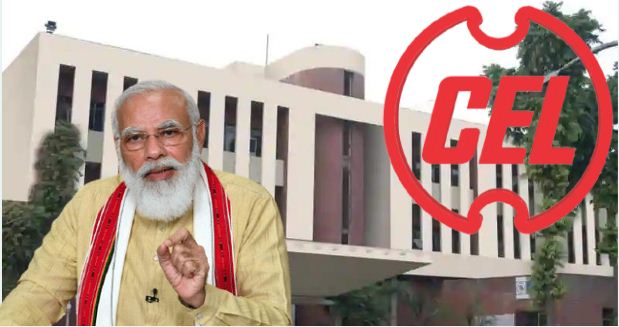- The government has completed the sale of another Public Sector Company after Air India.
- The special factor about this sale is that this time a profit-making company has been sold, unlike most previous sales.
- Central Electronics Limited, Ghaziabad based company under the Ministry of Science and Technology, has been sold to Nandal and Finance and Leasing for 210 crore rupees.
The government has completed the sale of another Public Sector Company after Air India, and the special factor about this sale is that this time a profit-making company has been sold, unlike most previous sales. Central Electronics Limited, Ghaziabad based company under the Ministry of Science and Technology, has been sold to Nandal and Finance and Leasing for 210 crore rupees.
Central Electronics Limited manufactures solar photovoltaic sales and strategic electronics items, and as per the financial report of 2015, its revenue was 164 crore rupees (24 million dollars) and profit was 14 crore rupees (2 million dollars approx). Nodal Finance and Leasing, the company which put the highest bid, is also a Ghaziabad-based firm and it was able to outbid JPL Industries Limited which has put a value of 190 crore rupees CEL.
“The Alternative Mechanism has approved the highest price bid of M/s Nandal Finance and Leasing Pvt Ltd for sale of 100 per cent equity shareholding of GoI in Central Electronics Ltd (CEL) – a CPSE under the Department of Scientific and Industrial Research (DSIR). The winning bid is for Rs 210,00,60000,” an official statement said.
There are 331 CPSEs with investments of 12,50,373 crore rupees at the end of the fiscal year 2017. Most of these companies are in the manufacturing and generation (96), services (119), and construction (76) sectors. The CPSEs in the energy sector made up two-thirds of all the profits of Rs 1,52,647 crores during 2016-17. Bharat Sanchar Nigam Ltd, Air India Ltd, and Mahanagar Telephone Nigam Ltd are among the worst performers in public sector companies. 82 CPSEs made losses of 25,045 crore rupees, and the number of loss-making CPSEs has grown from 54 in 2007-08 to 82 in 2016-17.
In the AatmaNirbhar Bharat plan, the Modi government has made it clear that the government will not be present in any sector of the economy except four strategic ones – atomic energy, Space and Defence; Transport and Telecommunications; Power, Petroleum, Coal, and other minerals; and Banking, Insurance, and financial services.
All the CPSEs in other sectors will be privatised and even in the strategic sector, there will not be more than four or five sectors. The government showed its commitment to privatisation with the recent big-ticket sale of Air India, which was gulping thousands of crores of taxpayer’s money every year.
Apart from the privatization drive, the government is also focusing on the monetization of the assets held by the public sector. And the cabinet nod is being sought to monetize the highly valuable land held by CPSEs and government departments in prime real estate areas. This monetization will be done by a company that would be set up in form of a Special Purpose Vehicle (SPV).
The union government is the biggest landholder in India with various ministries like Defence, Railway, holding millions of acres of land. Many PSUs like BSNL, Power Grid, Oil Marketing Companies (OMCs) also hold large swaths of land across the country.
In the last union budget, the finance minister stressed land monetization to meet the capital expenditure target and infrastructure development. Since then, the ministries are working on the plan with the Ministry of Railways and Ministry of Road Transport under the leadership of Piyush Goyal and Nitin Gadkari respectively, leading the way. Also, these two ministries need the most capital to build infrastructure, so monetization drive is crucial for them to raise money.
Read more: BSNL and MTNL are going to go the Air India Way
In its seven years tenure, the Modi government has consistently met the disinvestment target except for the last two years when the disinvestment was affected due to the Coronavirus pandemic. Given the fact the government has set the political economy in the right direction, India is set to become the third-largest economy in the world by the end of this decade.
